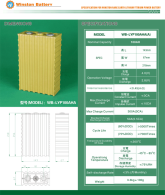You make a good point and I do like your solution, and think it needs more discussion hereGood day; I almost hate to wade in here as this has been an interesting conversation.
But for me: My 280ah batteries for my RV have a 14w heater on each side for a total of 28 watt consumption. The testing I did last spring showed that the heaters could increase the temperature of the battery by about 10 degrees in an hour. To go from O deg F to 40 deg F (which is where my Victron mppt controllers are set at to allow charging) it would only take 28 watts (each battery). And only 56 watts over 2 hours in the morning to get to an even safer 50 deg F.
With this in mind why would a person risk charging at anything below 40 or 50 deg even at a low .1C rate when the energy cost is so low to heat them up to a much safer range ? A rough calculation in this instance would be about 3% of the battery capacity to heat them up and get them to that 50deg mark where they can take a much higher current.
I think there are a few good reasons its still worth considering low temp cutoff or charging though.
1. Most people will not go to the trouble of designing a custom battery heating solution. Even if it dos make a lot of sense.
2. Layered protection is still a good idea. And multiple approaches to solving a problem is a good thing.
The most interesting part of the conversation for me is not the practical 'how do i protect the battery' question, but understanding the theoretical/scientific aspects of when and to what degree charging is harmful and what factors effect it.
I am also curious whether your numbers are accurate. I don't know anything about calculating how much energy it takes to raise the temperature of a certain amount of mass, but its hard for me to imagine that 56 or 112Wh of energy could raise and hold the temperature of ~100lbs of mass 50 degrees in 2 hours. Is it possible 0*F an 50*F is the air temperature not the cell temperature, or that you mean 0*C not 0*F?
(or is it possible I should keep quiet since I don't know what I'm talking about here
Last edited:



